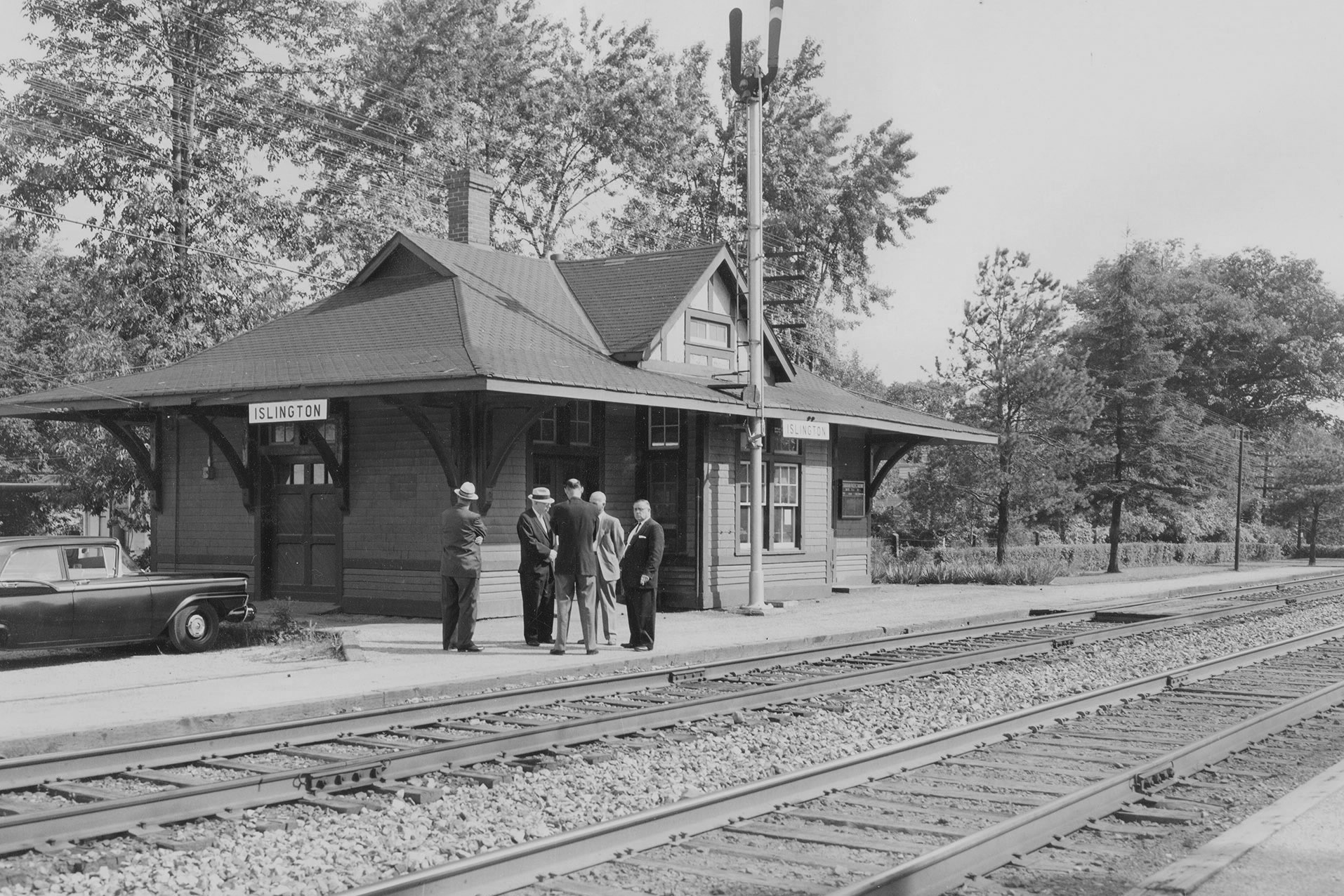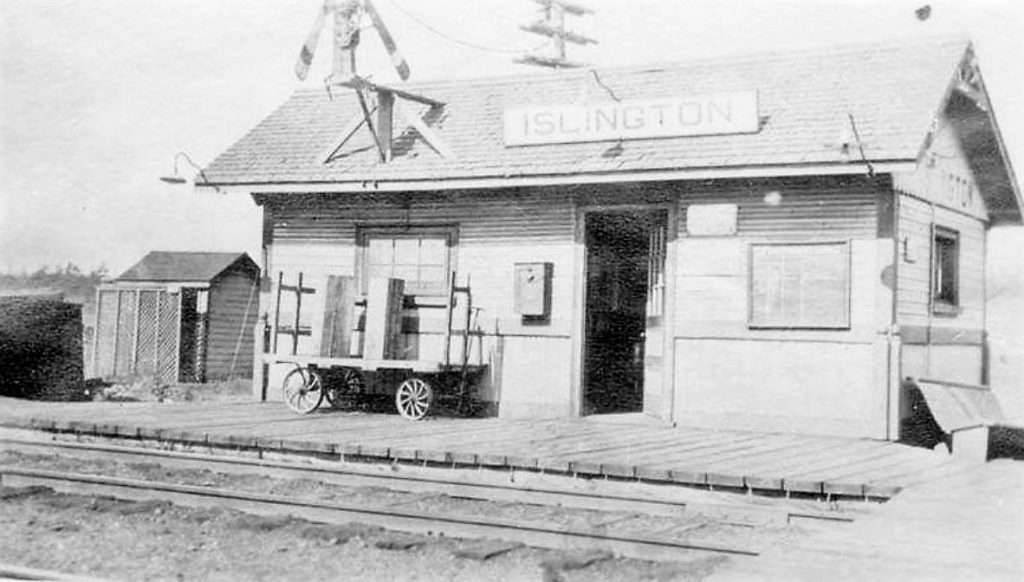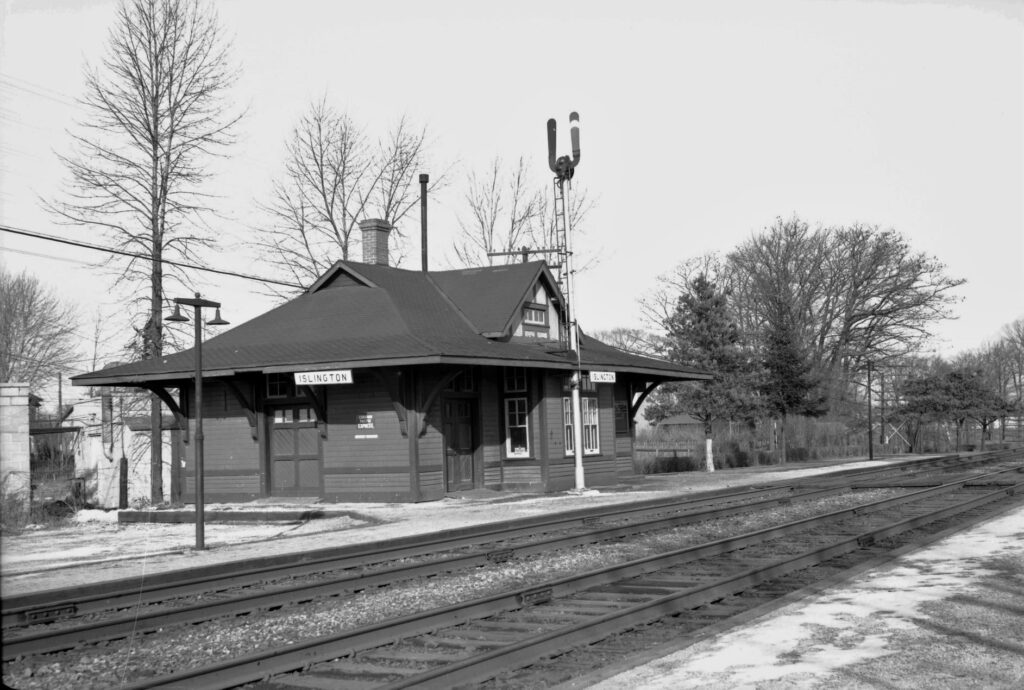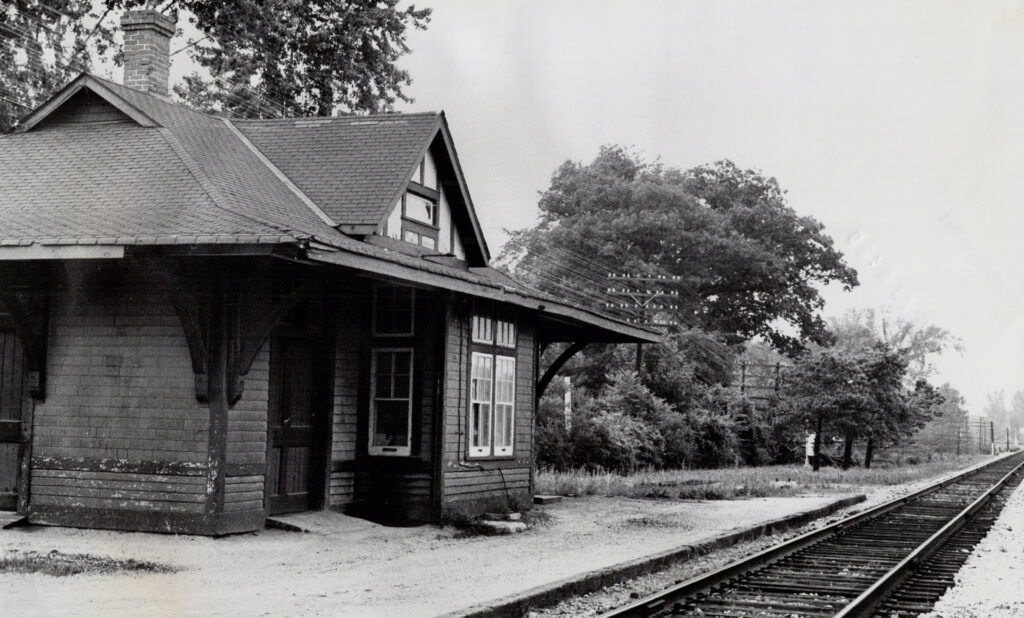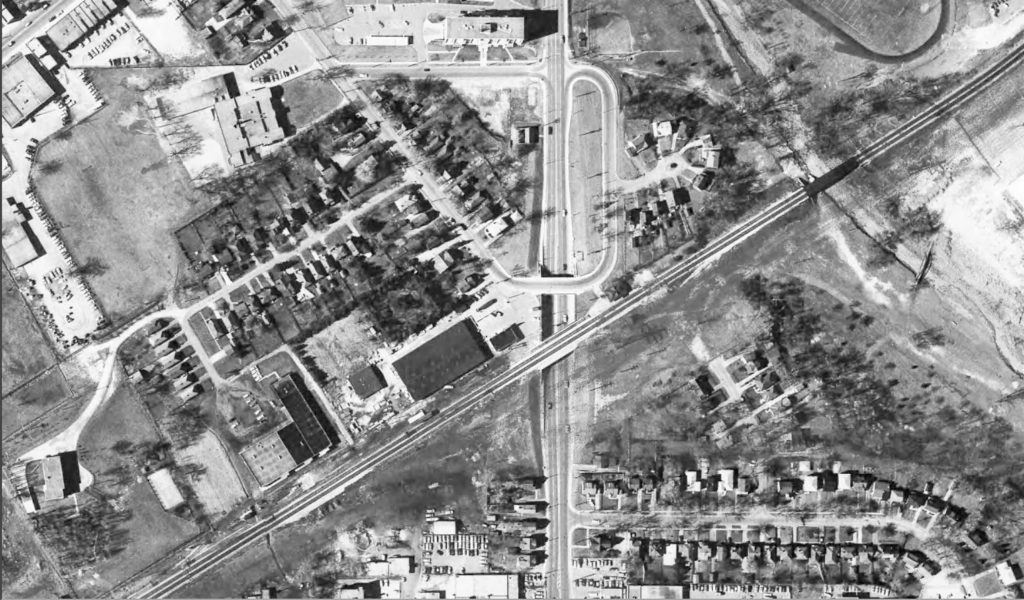Summary
Islington’s first train station was built by the Credit Valley Railway in 1879 whilst construction of the railway was progressing between Toronto and St. Thomas. The station building was a simple wooden structure with a pitched roof and little else in the way of amenities, but it was very conveniently located just 200 metres north of the Village of Islington’s main intersection. The first train arrived at Streetsville on September 1st, 1879 when regular service between Toronto and Campbellville commenced. In 1881 the Campbellville line was extended to St. Thomas, where the Credit Valley Railway interchanged with the Canada Southern Railway – providing an important connection with several major American cities. Rail traffic increased as a result, and by October 1883 a total of five passenger trains stopped at Islington Station per day.
The Canadian Pacific Railway gained control of the Credit Valley through one of its proxies, the Ontario & Quebec Railway, in November 1883. However, while service would greatly increase at other stations nearby Islington would see a consistent number of trains into the early 20th Century. These trains would also only stop at the station if flagged down as a means to prevent unnecessary stops, indicative of a local population that wasn’t large enough to produce substantial ridership. A second main track was laid through Islington between 1910 and 1913 to reduce congestion and allow for a higher volume of trains. Over the next decade, possibly due in part to an increasing local population, service to Islington Station would increase drastically to 20 trains per day by 1921. The tiny station building the Credit Valley Railway had built four decades earlier was no longer adequate. Canadian Pacific replaced it with a new station in 1922, and although it wasn’t terribly larger than its predecessor a lot more attention was put into its design.
Service to the new Islington Station suffered during the Great Depression, decreasing to twelve trains per day by 1940. There would be a brief rebound during the postwar era but it was cut short by the popularization of automobiles and air travel. Many of the places that could be accessed from Islington Station could now be driven to via the Middle Road (now Queen Elizabeth Way), which opened in 1937. Service to Islington Station was already reduced to just four trains per day by 1950. It would only see one westbound departure per day by 1957 with no eastbound counterpart, and the station closed to passengers entirely the following year in 1958. Access to the station from Islington Avenue was cut when the crossing was turned into a four-lane underpass in 1960, and from then on it could only be reached from Cordova Avenue. It was used by Canadian Pacific as a local freight agency until 1965, and the station was finally torn down in 1966.
After its formation in 1967, GO Transit made attempts to provide commuter service to the Islington area but these were met with resistance from Canadian Pacific who continued to use the rail line for freight traffic. After a derailment incident involving hazardous material known as the Mississauga Miracle occurred 12 kilometers to the west of the former Islington Station site in 1979, Canadian Pacific was forced to allow GO Transit to operate through the area in exchange for not being sued by the City of Mississauga. The Kipling GO Station was built 1.3 kilometers southwest of the original Islington Station site in 1981, bringing passenger rail back to the Islington area for the first time in 23 years. A mural depicting a steam engine at Islington Station was painted on a building in Lakeshore Village, although the train is incorrectly lettered for the Grand Trunk Railway.
Condensed Station Info:
| Location: | Served By: | Current State: | Date Built: | Date Demolished: |
| Cordova Avenue | Credit Valley (1876 – 1883) Canadian Pacific (1883 – 1958) | Demolished | 1876 (First) 1922 (Second) | 1921 (First) 1966 (Second) |


